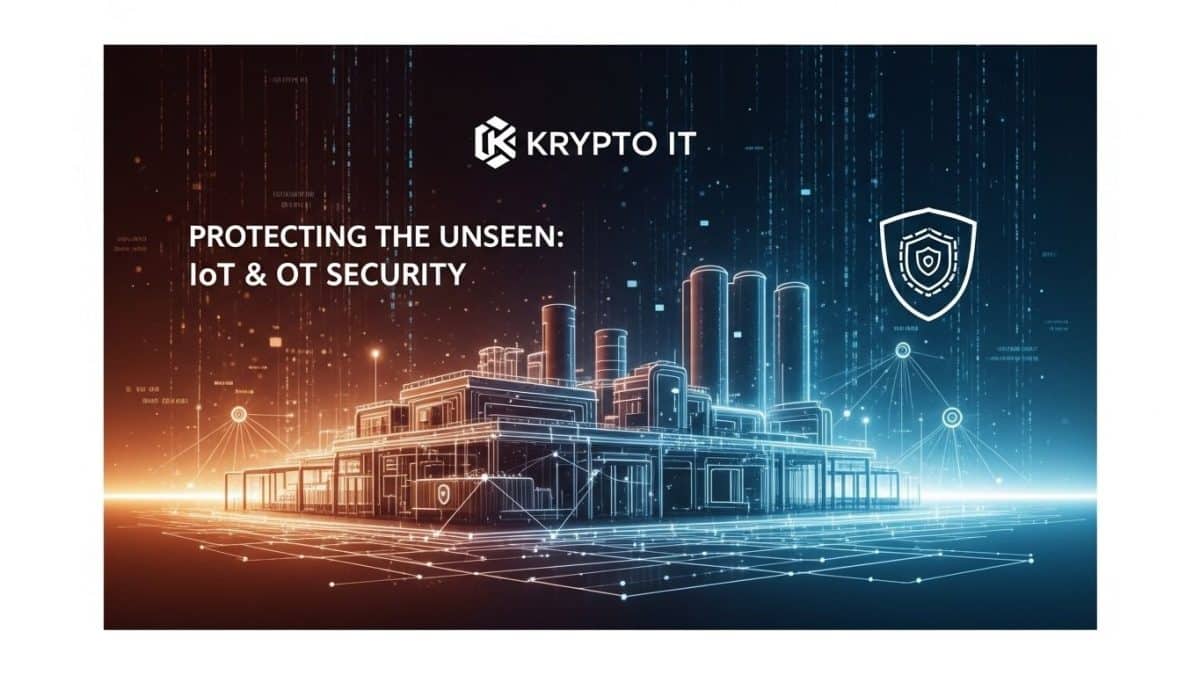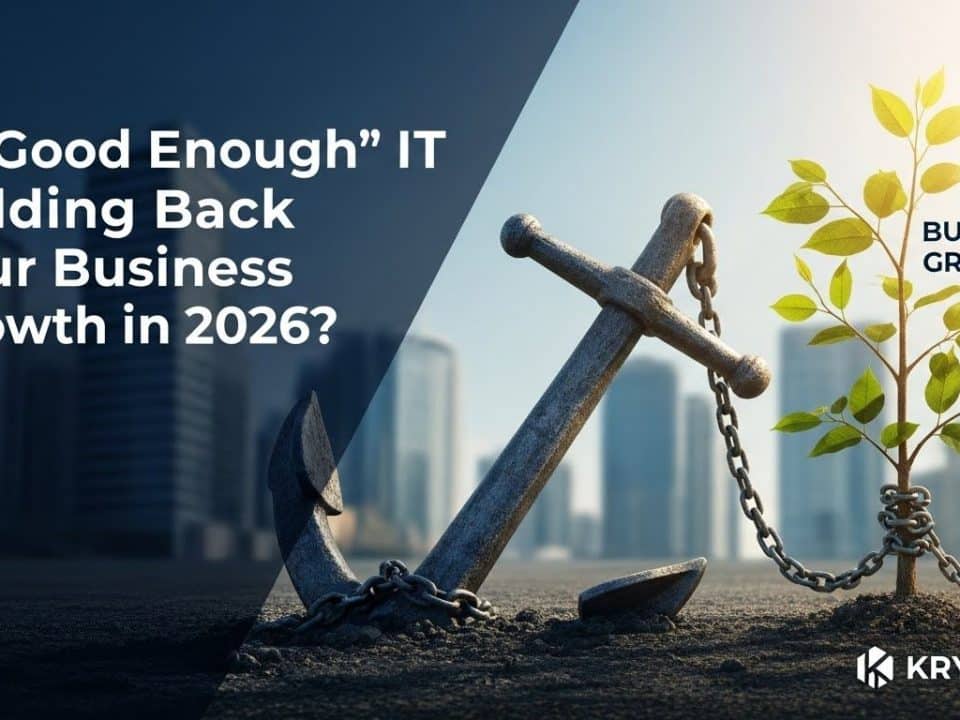
Mobile Mayhem: Securing Your Pocket Powerhouse
June 13, 2025
Third-Party Risk: Your Biggest Blind Spot
June 17, 2025Addressing Vulnerabilities in Your Connected & Critical Systems
In today’s hyper-connected world, businesses are increasingly reliant on devices that operate silently in the background, yet are critical to daily operations. These include the vast array of Internet of Things (IoT) devices – from smart thermostats and security cameras to networked sensors – and Operational Technology (OT) systems, which control physical processes in industries like manufacturing, energy, and building management. While these technologies offer immense efficiency and innovation, they also represent a growing and often “unseen” attack surface, posing significant cybersecurity risks for Small and Medium-sized Businesses (SMBs) in Houston.
Unlike traditional IT systems, IoT and OT environments have unique vulnerabilities and require specialized security approaches. Neglecting these areas can lead to severe operational disruptions, safety hazards, and significant financial and reputational damage.
Understanding IoT and OT: The Connected and the Critical
Before diving into security, it’s essential to grasp the distinct nature of IoT and OT:
- Internet of Things (IoT): Refers to physical objects embedded with sensors, software, and other technologies for the purpose of connecting and exchanging data with other devices and systems over the internet.
- Examples for SMBs: Smart lighting, networked HVAC systems, smart security cameras, connected printers, smart door locks, inventory tracking sensors, smart appliances in breakrooms.
- Primary Concern: Data confidentiality and integrity, privacy, and their potential use as entry points into the broader IT network.
- Operational Technology (OT): Refers to hardware and software that detects or causes a change through the direct monitoring and/or control of physical devices, processes, events, and industrial equipment.
- Examples for SMBs (especially in specific sectors): Industrial control systems (ICS), Supervisory Control and Data Acquisition (SCADA) systems, programmable logic controllers (PLCs), manufacturing line controls, building management systems (BMS), specialized medical devices.
- Primary Concern: System availability and safety. A breach here can lead to physical damage, production halts, environmental incidents, or even endanger human lives.
The Unique Vulnerabilities of IoT and OT Systems
Both IoT and OT systems present distinct cybersecurity challenges that differ from traditional IT:
IoT Vulnerabilities:
- Insecure Default Settings: Many IoT devices ship with weak, default, or even hardcoded passwords that are rarely changed by users, making them easy targets for attackers.
- Lack of Secure Update Mechanisms: Many IoT devices lack robust, automated update processes, meaning known vulnerabilities often go unpatched.
- Insecure Network Services & Protocols: Devices may run unnecessary services or use outdated, unencrypted communication protocols, making them susceptible to eavesdropping and manipulation.
- Limited Computational Abilities: Many IoT devices have limited processing power and memory, which restricts their ability to run advanced security software or strong encryption.
- Insufficient Privacy Protection: IoT devices collect vast amounts of data, and if not handled securely, this can lead to significant privacy breaches.
- Physical Tampering Risks: Many devices lack physical hardening, making them vulnerable to direct physical access and manipulation.
- Poor Device Management & Visibility: SMBs often lack a comprehensive inventory of all IoT devices connected to their network, creating blind spots.
OT Vulnerabilities:
- Legacy and Outdated Systems: Many OT systems have extended lifecycles (decades even), running on outdated software or operating systems that no longer receive security updates. Patching can also be challenging due to strict operational uptime requirements.
- Lack of Network Segmentation: Historically, OT networks were often air-gapped from IT. With increasing IT/OT convergence, many OT networks lack proper segmentation, allowing attackers to move laterally from IT systems into critical OT infrastructure.
- Weak Authentication and Access Controls: OT environments often have weak password policies, shared credentials, or insufficient role-based access controls.
- Insecure Remote Access: The need for remote monitoring and maintenance has opened up OT systems to the internet, often with inadequate security measures.
- Proprietary Protocols: OT systems often use specialized, sometimes undocumented, communication protocols that are not designed with modern security in mind, making them difficult to monitor with standard IT security tools.
- High Availability Requirements: The imperative for continuous operation in industrial settings often means security measures that could cause downtime (like patching or deep scanning) are avoided.
Why IoT and OT Security is Critical for Houston SMBs
The impact of a successful attack on these “unseen” systems can be severe for your business:
- Operational Disruption: IoT device compromise can disrupt smart building systems, security cameras, or networked printers. OT attacks can halt manufacturing lines, disrupt HVAC, or even impact utility services, leading to massive financial losses and reputational damage.
- Safety Hazards: In industrial settings, compromised OT can lead to equipment malfunction, physical damage, environmental incidents, and even pose a risk to human life.
- Data Theft and Espionage: IoT devices can be leveraged to steal sensitive data (e.g., security camera feeds, smart meter data) or used as a stealthy entry point for espionage.
- Compliance Violations: Breaches involving certain IoT or OT data can lead to regulatory fines and legal liabilities.
- Reputational Damage: News of operational shutdowns or safety incidents due to cyberattacks can severely damage public trust and your business’s reputation.
- Ransomware Expansion: Attackers are increasingly targeting IoT devices for botnets (e.g., for DDoS attacks) or even deploying ransomware that affects OT systems, demanding payment to restore critical operations.
Protecting the Unseen: Best Practices for Your SMB
Securing IoT and OT requires a dedicated strategy:
- Comprehensive Asset Inventory and Discovery: You can’t protect what you don’t know you have. Identify every IoT and OT device on your network, their purpose, their communication protocols, and their patch status.
- Network Segmentation: Crucially, isolate IoT and OT networks from your main IT network. Use firewalls and VLANs to create “demilitarized zones” (DMZs) and separate critical systems from less secure ones. This contains breaches and limits lateral movement.
- Strong Authentication and Access Controls: Change all default passwords immediately. Implement strong, unique passwords and multi-factor authentication (MFA) for all IoT/OT devices and access points where possible. Apply the principle of least privilege.
- Secure Remote Access: If remote access is necessary for OT, use highly secure VPNs or zero-trust network access (ZTNA) solutions with strict authentication and monitoring.
- Patch Management (with Caution): While continuous patching is vital, OT systems often require careful planning. Test patches in a non-production environment first to ensure they don’t disrupt critical operations.
- Disable Unnecessary Services: Turn off any ports, protocols, and services on IoT and OT devices that are not essential for their function.
- Encrypt Data in Transit and At Rest: Wherever feasible, ensure data transmitted to and from IoT devices, and data stored on them, is encrypted.
- Physical Security: Secure physical access to IoT and OT devices to prevent tampering.
- Continuous Monitoring: Implement specialized IoT/OT security solutions that can monitor device behavior for anomalies and detect threats unique to these environments.
- Vendor Security Assessment: When procuring new IoT or OT devices, thoroughly vet the vendor’s security practices, update policies, and track record.
- Incident Response Planning (OT/IoT Specific): Develop an incident response plan that accounts for the unique challenges of OT/IoT environments, including potential physical impacts and safety concerns.
The proliferation of IoT and the increasing connectivity of OT systems mean that these “unseen” vulnerabilities are no longer just for critical infrastructure; they are a direct threat to everyday SMBs. Krypto IT specializes in helping Houston businesses identify, assess, and mitigate risks across their entire digital footprint, including these often-overlooked but critical systems.
Contact us today to schedule a free consultation and ensure your business is protected from the ground up, securing every device, visible or unseen.




